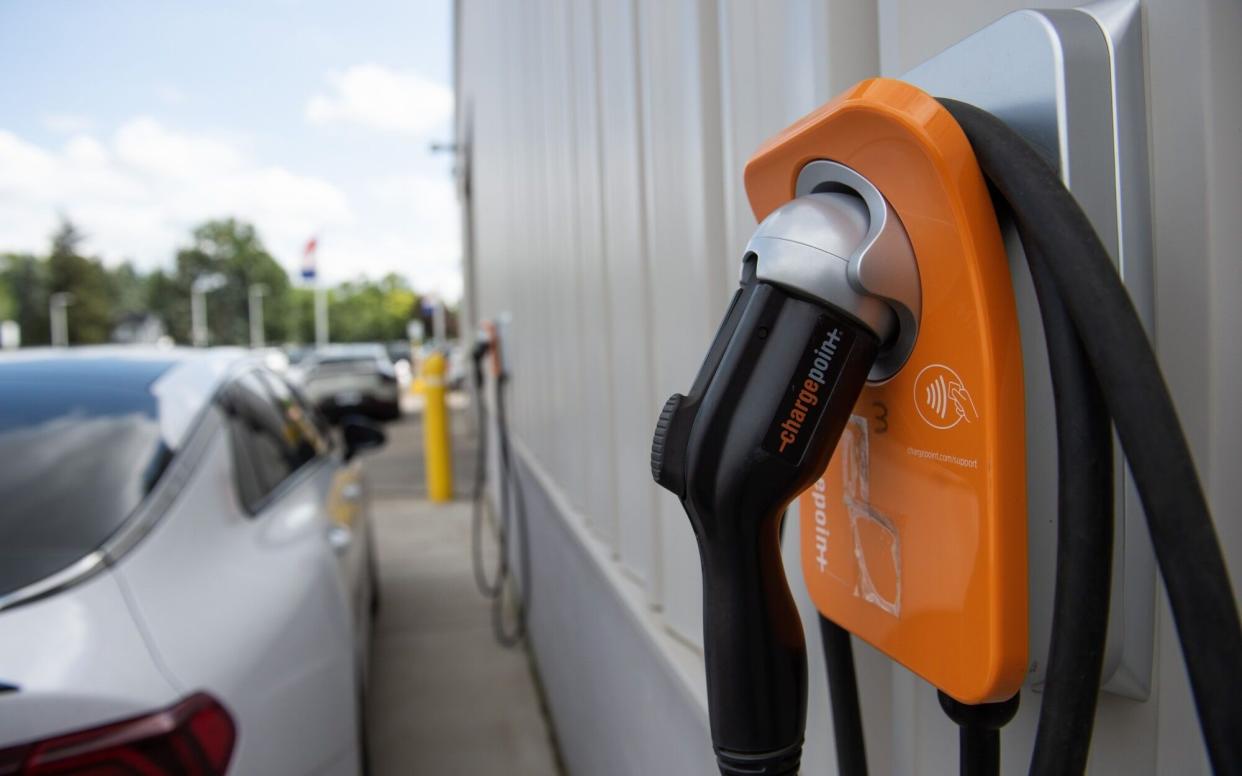Electric car MOT tyre failure is 40 per cent higher than for petrol vehicles

Electric vehicles (EVs) have a 40 per cent higher MOT tyre failure rate than petrol cars, new analysis has revealed.
The greater average weight of EVs compared with other vehicles is responsible for the higher rate, according to a report from the Institute of the Motor Industry (IMI).
It also found that the overall MOT failure rate for newer EVs from all causes is marginally greater than for petrol vehicles.
The report, which looked at 2021 data, is the latest to highlight the impact electric vehicles are having due to their weight.
Last month, the Asphalt Industry Alliance (AIA) warned that EVs could exacerbate the pothole crisis on residential roads, while new guidance has also recently been drawn up to ensure that car parks can cope with the weight of increased EV use.
The IMI said that its research found EVs failed “more on dangerous items” than petrol vehicles, picking out tyres as the main culprit.
It compared Department for Transport data between 2015 and 2018 and found that 46 per cent of EV MOT failures were due to tyres, while in petrol cars the rate was 32 per cent.
Looking at all cars registered between 2015 and 2018, the relative difference is 40 per cent.
Commenting on the findings, Steve Nash, CEO of the IMI, said that there was a trend that heavier electric vehicles went through tyres more quickly and put more strain on suspension components.
He added: “Most electrics are electric versions of petrol and diesel, so they are relatively heavy, and it doesn’t really matter what you do with different tyre mixes, they are simply going to wear tyres more.”
The report also suggested that greater torque delivery – the power put through the wheels – could also accelerate tyre wear, particularly from a standing start, when compared to a combustion engine.
Check your wheels
Jack Cousens, head of roads policy for the AA, said the report highlighted how important it was for drivers to check their wheels.
He said: “Checking tyres and lights on a regular basis, coupled with regular servicing, means all drivers can keep their wheels on the road regardless of what they drive.”
The weight of the EVs included in the 2021 testing were on average 25 per cent heavier than petrol counterparts. Much of the additional weight in an electric vehicle is in its battery, with some weighing around 500kg.
It is widely acknowledged that EVs should be easier to maintain than combustion engines due to simpler operational make-up and less mechanical parts.
More likely to fail
Despite this, the IMI data showed that newer electric vehicles were more likely to fail an MOT than petrol equivalents.
According to 2021 data, electric vehicles registered in 2018 had a failure rate of 11.39 per cent, compared to 10.74 per cent for petrol, with similar differences for cars sold in 2016 and 2017.
The report suggested that this was surprising particularly as “EV owners in 2018 would be classed as enthusiast or early adopters” and would “likely maintain their vehicles better than today’s average EV driver”.
Much of this was again due to tyre wear with 43 per cent of EV failures due to this, compared to just over 30 per cent for petrol cars.
Overall, the failure rate for all electric vehicles was below petrol vehicles with 20 per cent of all EVs registered since 2000 failing, compared to 29 per cent of petrol vehicles.
Shortage of technicians
The IVI report also revealed widespread shortages of skilled technicians qualified to fix electric vehicles across large swathes of the country.
According to the findings, there were 150 local authority areas across the country where less than 2 per cent of all trained mechanics could fix electric vehicles.
It comes as the number of electric vehicles on our roads is set to grow significantly in the coming years, with the government set to ban the sale of petrol vehicles by 2030.
The IMI has estimated if training of new technicians and vehicle ownership continues to grow at their current rate, there could be a shortfall of 16,000 workers by 2032.
Mr Nash said he believed that a technician shortage was as important as the charger shortage and could have ramifications for the attractiveness of EVs. He said: “If people don’t think they can get their car fixed, that’s as much of a reason not to buy one as not having a network of charging points.
“There’s always that risk that somebody will decide to have a go at it, and think ‘how difficult can it be anyway?’, and that’s when you open yourself up to injury, or worse.”
Steve Gooding, director of the RAC Foundation, said: “None of us wants the dream of cleaner, greener motoring turning into a nightmare because garages lack the qualified technicians they’ll need to carry out the routine checks and repairs that will still be needed.
“With the purchase price of electric cars still running ahead of petrol and diesel equivalents, anything which harms the economics or practicality of owning one is unwelcome, so the imperative – and the opportunity – here is for the industry to get itself geared up.”


